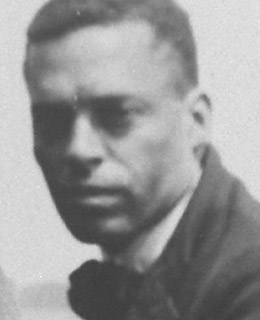
Just as the stem cell research debate rages today, the rift between the then-fledgling studies of genetics and embryology raged during the 1930s. The question at the forefront was how genetics should be seen as part of the study of biology. Scientists were also consumed with cross-disciplinary arguments over whether genetics and embryology should be two separate studies. The most significant contributor to the solution of that argument was a South Carolina-born zoologist and embryologist named Ernest Everett Just.
Born in 1883, Just graduated from Dartmouth University and moved to Washington D.C. to teach at Howard University. He soon became head of the biology and zoology departments there, and in 1916, earned his doctorate from the University of Chicago, a year after being awarded the very first Spingarn Medal from the NAACP. He later studied in Europe where he won acclaim in his work with marine life.
Returning to the U.S., he began work on thousands of experiments at the Marine Biology Laboratory at Woods Hole, Mass., on the marine mammal cell. In 1922, while conducting thousands of experiments on marine mammal cells at the Marine Biology Laboratory at Woods Hole, Mass., he successfully challenged Jacques Loeb's theory of artificial parthenogenesis in which Loeb claimed to cause asexual fertilization of sea urchin eggs by changing certain factors in their environment. This led to a falling out with Loeb, but undaunted, Just persevered saying — and proving — that factors aside, cells performing this type fertilization do it naturally and they have all the tools they need within their own ectoplasm. He also insisted that lab factors for egg experimentation should be as close as possible to those found in nature.
This proof led to his later determination that an egg's structure, no matter what the species, was as important, if not more, as any external factor for development and subsequently evolution. His findings and other Woods Hole works were published in his famed work Basic Methods for Experiments on Eggs of Marine Animals, and gave birth to a new scientific area: ecological developmental biology, which has only been appreciated by the scientific community in recent years.
However, racism and discrimination against black scientists was prevalent at the time and Just believed he would never achieve a tenured position at a major American university. In 1929, he left again for Europe and conducted research and experiments in Naples, was invited to the Kaiser Wilhelm Institute in Berlin and moved permanently to Paris in 1938. The next year, Just published his most famous work, The Biology of the Cell Surface which argued that all life derives from a complex organic structure.
"Life," he wrote, "is the harmonious organization of events, the resultant of a communion of structures and reactions." As World War II ensued, Just was briefly imprisoned by Hitler's forces and his already weakened health deteriorated. The U.S. State Department rescued him and returned him to Washington, where he died in 1941.